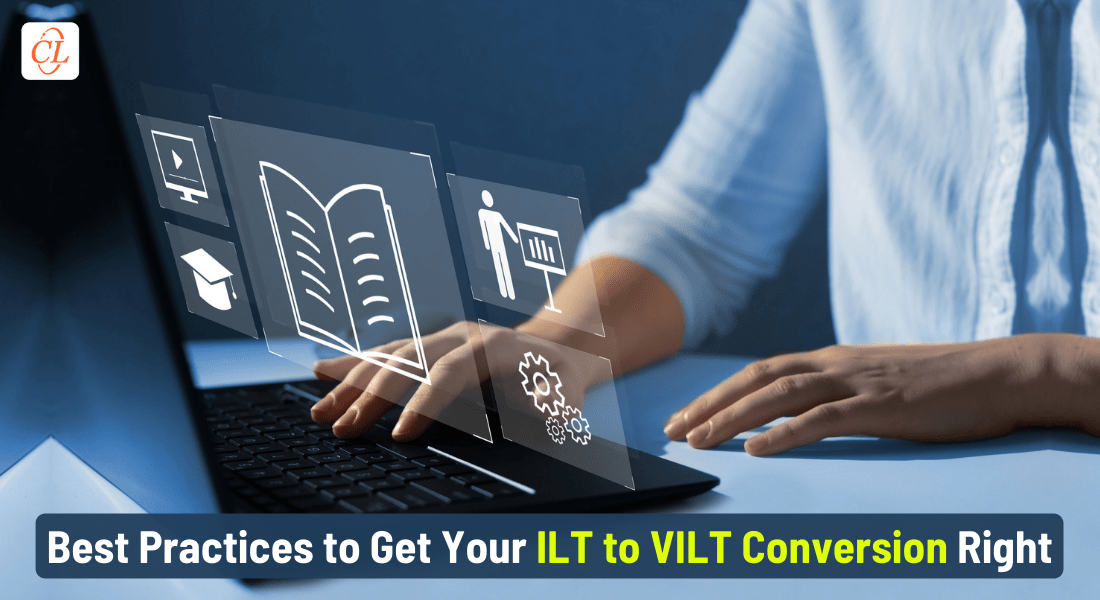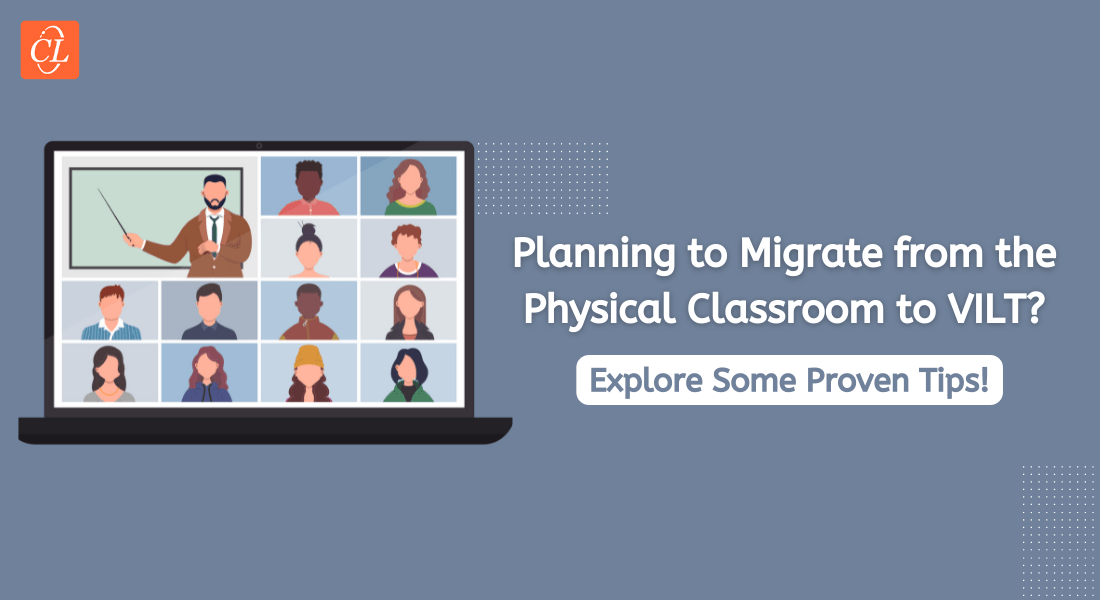5 Best practices for Successful ILT to VILT conversion

Until the pandemic hit classroom training was quite popular. However post-pandemic we have seen a paradigm shift in the way learning happens. Going virtual is one such change adopted by the organization’s post-pandemic. The same goes for training. From Instructor-led training to virtual instructor-led training is what organizations are opting for.
Want a Smooth ILT to VILT Transition?
Here Are Some Best Practices:
- Defining Learning Objectives
- Re-evaluating Content
- Including Tools and Technologies
- Determining Delivery
- Preparing Learners for Success
I agree that instructor-led training has its own benefits and importance however looking at the current scenario going virtual seems like a practical and future-proof solution. Now that you will be converting from ILT to VILT, the transition process is not easy. Virtual training is not a trainer delivering a lecture online, it is much more than that. Let us find out. I have discussed 5 best practices to follow for successful ILT to VILT conversion.
Best practices for ILT to VILT conversion
Defining Learning Objectives
One of the most important practices of any learning program is to clearly define the learning objectives. It is significant when it comes to virtual instructor-led training. You need to analyze the objectives of the learning program while it was delivered as instructor-led training. Then decide whether it matches the objectives you want to achieve when delivering VILT. Defining goals is the first step for any learning program. If you have well-established objectives, it gives a direction to your learning program. When it comes to ILT to VILT conversion this is one best practice one shouldn’t forget.
In this webinar recording are some amazing tips to replicate the real classroom, virtually.
Re-evaluating Content
ILT content converted to PPT and delivered virtually is not virtual instructor-led training. There are a few things to keep in mind when comes to the content being converted for VILT.
While converting from ILT to VILT, text-heavy content is a big no. But at the same time creating the content from the scratch is time-consuming and involves cost and effort. Instead, the content can be shortened and presented interestingly. One way is to convert the text to visuals like videos, infographics, animations, graphics, etc. while delivering learning virtually. It is also important to decide what content is important and how is it helpful to make courses future-proof. Also, the content should be presented in such a way that it is relatable for the learners and there is a proper flow. The content should connect with the learners for effective learning and to make learning engaging.
Including Tools and Technologies
If the learners are engaged, they retain knowledge better. Learning and development professionals can
leverage tools and techniques to promote engagement. Effective virtual training is not a video with voice-over. Effective virtual training is when the trainer can engage learners with visual cues. While converting from ILT to VILT, ensuring that online training must contain multimedia content is a good practice. While converting to VILT you can add images, videos, interactivities, etc. to enhance engagement. You can also add game-based learning elements to make learning exciting and immersive. Other engaging tools may include rewards, leaderboards, milestones, etc. now leveraging all these tools and technologies during ILT to VILT conversion makes learning effective.
Determining Delivery
While converting from ILT to VILT another important step is to ensure the method of delivery of training. Virtual instructor-led training is not just a trainer delivering training online. Usability and accessibility are something you should emphasize while selecting the software you choose to deliver learning. It is important to ensure that the platform meets all the learning needs of the organization. Maintaining collaboration between the trainer and the learners is a priority when selecting the training platform. Also, it is important to make sure that the trainer is familiar and wee-versed with the training platform and can deliver learning effectively in the virtual environment. Ensuring the use of features of the virtual platform to deliver engaging learning is a must. It is another best practice during ILT to VILT conversion.
Preparing Learners for Success
Another important thing to ensure is to keep the entire process transparent with the learners. Informing the learners in advance about the strategy of the training session. Preparing them before the virtual session makes sure the training is a success. Ensuring that the learners are well aware of the learning platform, probable technical challenges, and other important details, prepares them for success and makes training a success. Hence a successful ILT to VILT conversion.
It’s a Wrap!
I hope this blog helped you with some important insights for a successful transition from instructor-led training to virtual instructor-led training. Successful conversion leads to successful training, which then leads to improved learner engagement, enhance learning experience, and better learning outcomes. It cannot be denied that classroom to eLearning is not an easy transition, it requires time and effort when it comes to transferring content and collaborative experiences. However, if you practice the above-mentioned points, I am sure the transition could be seamless. Well, you still might have more questions. We have compiled the most frequently asked questions related to ILT to VILT conversion for you in an eBook. Get your copy now!
Editor’s note: This post was originally published in January 2023 and has been updated for comprehensiveness.







![3 Key Considerations While Converting Classroom Training Material to VILT [SlideShare]](https://blog.commlabindia.com/hubfs/Imported_Blog_Media/classroom-vilt-conversion-key-considerations-ensure-success-slideshare.png)